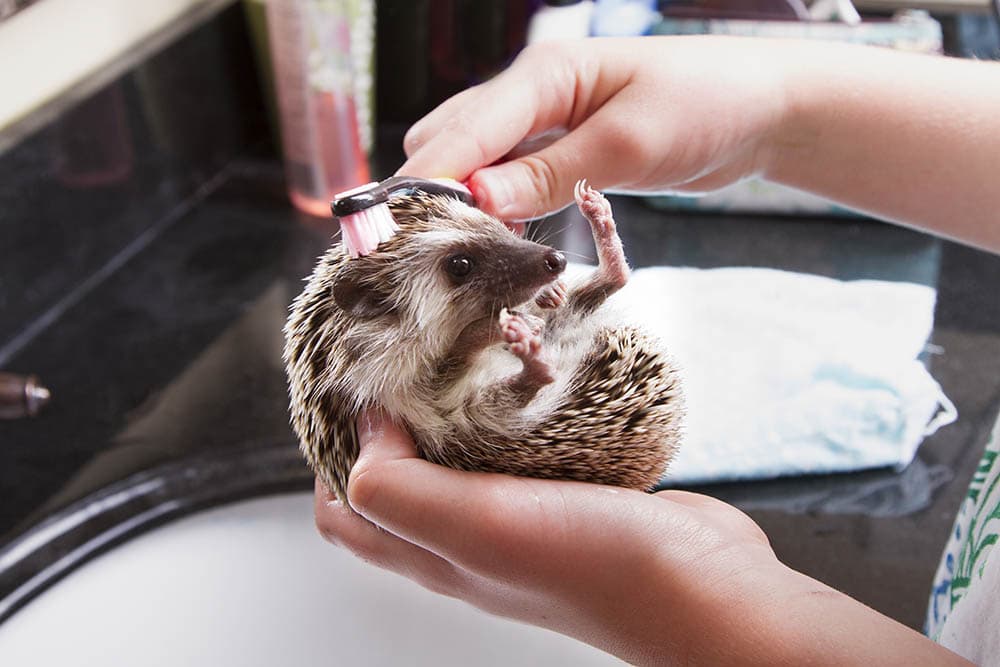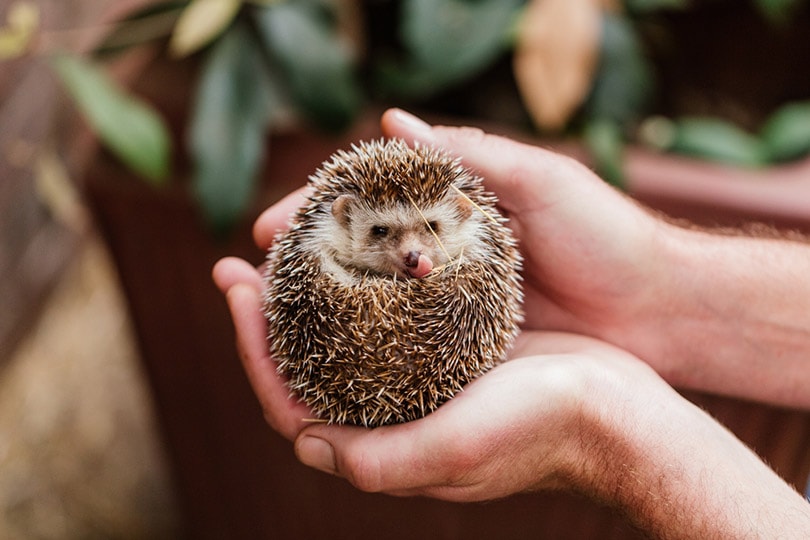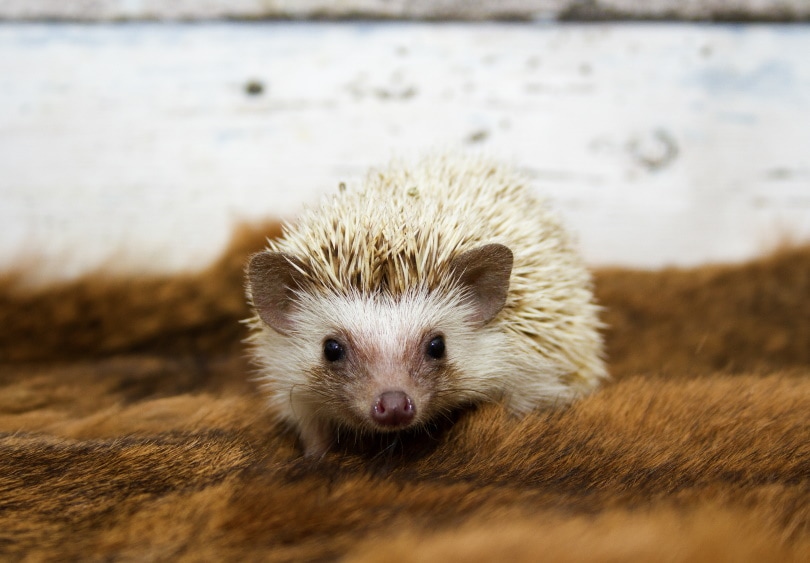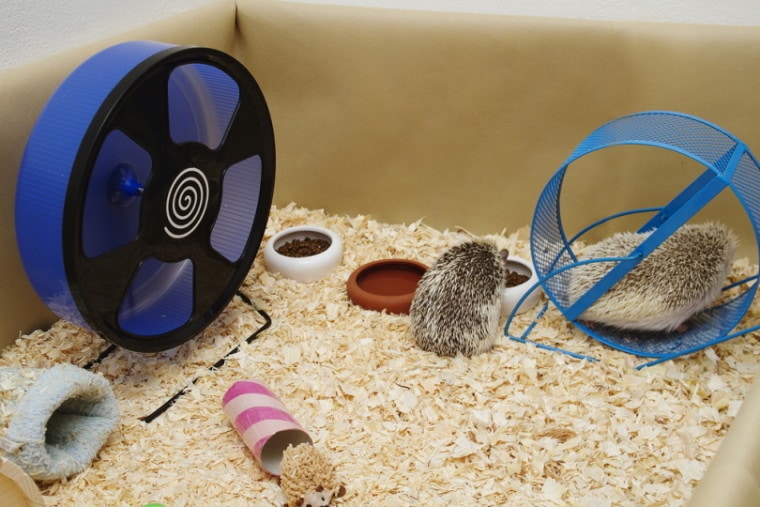
If you are bringing a pet hedgehog home, it’s important to set up the perfect hedgehog habitat so that your pet is happy and healthy with a home of its own. If you are like many first-time hedgehog owners, you might be a bit lost about what to do to set up the hedgehog cage.
In this article, we provide a step-by-step guide to creating the perfect hedgehog habitat in seven simple steps. We also provide tips for picking out the right cage and keeping it clean. Without further ado, let’s get started.
Picking Out The Right Cage
Before setting up a hedgehog cage, you first must know what type of cage you want. There are typically five types of housing for hedgehogs: commercial pet cages, playpens, aquariums, cardboard DIY houses, and plastic DIY houses.
Select a cage that is perfect for your hedgehog and your home. Generally speaking, a hedgehog playpen is often the best because it is very spacious, provides more than enough ventilation, and can easily be moved around. Commercial pet cages are also a good choice, if you get a cage that is at least 4 by 2 feet.
Whenever you are picking out a cage, make sure it is large enough for your hedgehog, does not have safety hazards, and has plenty of ventilation. You can always start with a commercial cage and customize it yourself if you want your hedgehog to have more features and space.
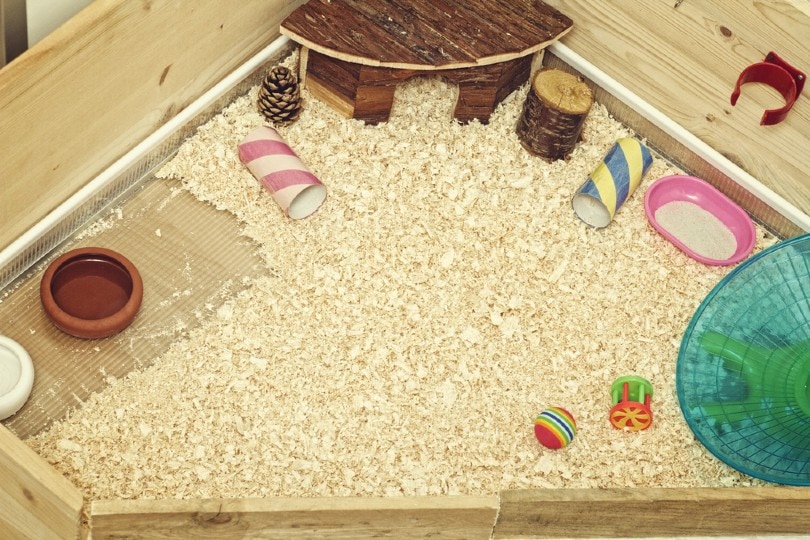
Tips Before Getting Started
Once you know what sort of cage you want to set up for your hedgehog, it’s about time to get started. It’s important that you create a designated cage creation time before bringing your hedgehog home. If the cage is not set up when you bring your hedgehog home, you won’t have anywhere to put the hedgehog while you are setting the cage up.
Since you need to set up the cage beforehand, make sure that you have all the items you need as well. This includes a substrate, bedding, food and water accessories, a litter box, hideouts, toys, exercise items, and any other additions you want to add to the cage.
If you aren’t sure what sort of bedding, substrates, and toys are safe for your hedgehog, call up an exotic vet. An exotic vet will give you great recommendations that are both safe for your hedgehog and fit within your budget.
Additionally, follow the instructions that come with your commercial hedgehog cage than our own. In other words, if our instructions differ from the instructions that come with your cage, go with the instructions on your cage since ours are more general.
The 7 Steps to Set up a Hedgehog Cage
1. Read Instructions (If Applicable)
If you purchased a commercial hedgehog cage, make sure you read the instructions first. Every cage will come with its own set of instructions so that you know exactly what to do. Reading the instructions first ensures that you do everything correctly.
If you are creating a DIY cage instead, read the instructions for the creation and setup. DIY cages will involve a lot more work since you must make the cage in addition to setting it up.
2. Set Up The Cage
Once you’ve read the instructions for your cage, follow the instructions to set it up. Most likely, the instructions will include connecting walls together so that the cage provides a safe and enclosed environment for your hedgehog.
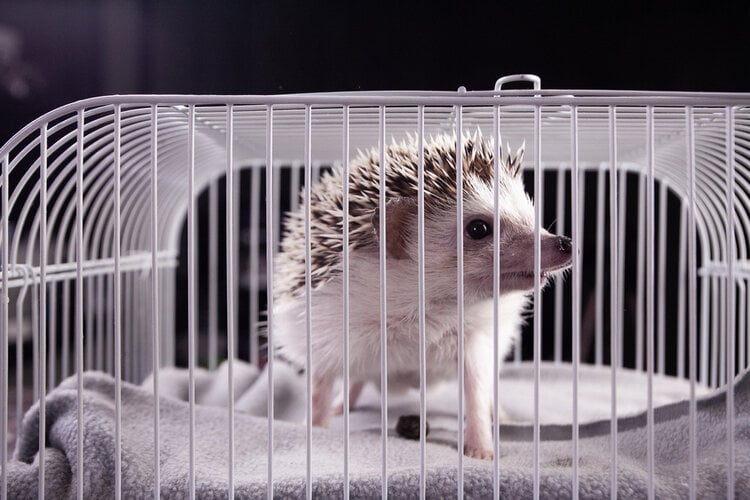
3. Place The Cage
After you’ve physically set up your cage, place it in the ideal location for your hedgehog. Placing the cage now means you won’t have to worry about knocking over the toys and accessories inside the cage once they are placed.
You want the hedgehog cage to be in a safe and quiet location. Because hedgehogs are prey animals, they can get stressed easily. So, place the cage somewhere where there aren’t a lot of loud noises or that other pets can’t get to the hedgehog. It’s a good idea to keep the cage away from open ventilation too so as not to irritate the hedgehog’s sensitive respiratory system.
4. Add Bedding and Substrate
Now that the cage is in place, you can start adding inserts to the cage. Begin by adding bedding and substrate. The easiest bedding type is made from fleece because it is absorbent, easy to clean, and reusable. If you don’t want reusable betting, opt for aspen shavings, pelleted wood bedding, or fluffy paper bedding.
Never use pine or cedar bedding because these woods are too aromatic and will irritate your hedgehog’s respiratory system. Likewise, many newspaper beddings include toxic ink and materials.
After the substrate is laid down, you can also add cuddle beds or small houses made from fleece so that your hedgehog has comfy and cozy places to lay down.
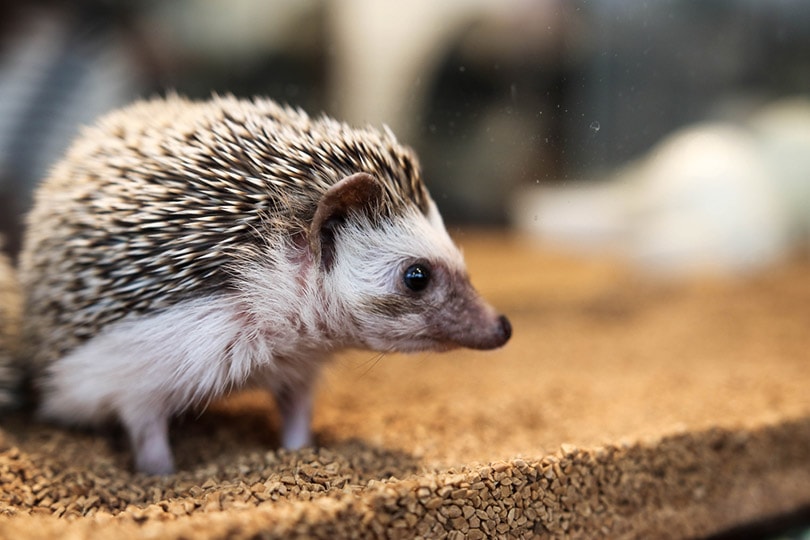
5. Add Food and Water Accessories
Hedgehogs need constant access to water and bowls for food. Food dishes are almost always in bowl form. Make sure that the bowl you select is heavy so that the adventurous hedgehogs don’t knock their food everywhere. Ceramic or stainless steel bowls not easily chipped are the best choices.
As for water stations, you have two choices: water bottles or water bowls. Unlike mice and gerbils, some hedgehogs don’t like the water bottle, but the water bottle means that your hedgehog isn’t going to spill water everywhere. For hedgehogs that do not like water bottles, you will have to use a heavy bowl for them to drink from instead.
6. Set Up A Litter Box
Much like cats, hedgehogs can be trained to do their business inside a litter box. Place a litter box or pan on the opposite side of the cage from the food station. You want the food station and bathroom stations to be far away so as not to contaminate any food.
When you bring your hedgehog home, you will have to train it to use the litter box. Otherwise, it will do its business everywhere.
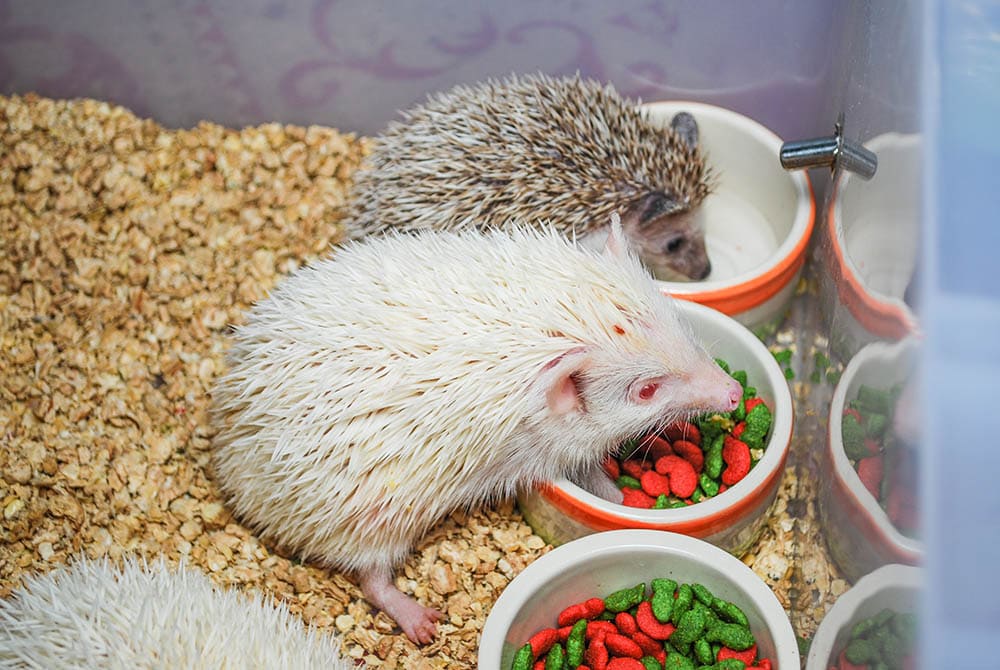
7. Add Hideouts, Toys, And Exercise Items
Finally, the last step for setting up your hedgehog cage is to add hideouts, toys, and exercise items. Always provide areas for your hedgehog to hide in case they get scared or tired. Snuggle bags made from fleece are a great choice.
Make sure to provide your hedgehog toys as well. They love forging, digging, playing, and more! For further exercise and fun, provide your hedgehog with a big exercise ball. Like many rodents, hedgehogs love to run in exercise balls and wheels, but ensure that the exercise devices are big enough for your hedgehog to get inside comfortably.
Tips For Keeping Your Hedgehog Cage Clean
After you bring your hedgehog home, you will have to clean out its cage regularly. Spot-clean the cage daily to pick up any waste or shredded items. Once a week, deep clean the cage to ensure that everything is perfect for your hedgehog.
When cleaning out the cage, use hot water, vinegar, and antibacterial soap. If you are using reusable fleece liners, only wash the liners with a detergent suitable for those with sensitive skin. Any type of fragrance will irritate the hedgehog’s respiratory system.
Before reassembling the cage after cleanup, ensure that all aspects of it are dry. If you reassemble the cage while it is still wet, mold can build up and harm your pet.
Final Thoughts
Setting up your hedgehog’s cage isn’t too difficult. It’s critical to pick the right cage. From there, read the instructions and then place the cage in the best location. To finalize the cage, add bedding, substrate, accessories, a litter box, and toys.
The work is not over yet. Remember you will have to clean out your hedgehog’s cage every day that your hedgehog is in your care to ensure it has the cleanest and safest living conditions.
Featured Image Credit: Best Dog Photo, Shutterstock



